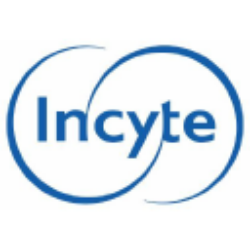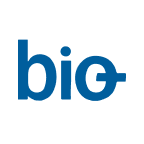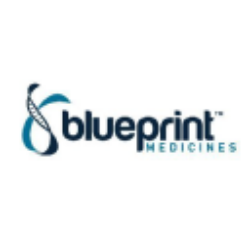JAZZ

Jazz Pharmaceuticals plc
JAZZ
(1.2)120,98 USD
8.69% ROA
12.06% ROE
17.14x PER
6.645.911.670,00 USD
152.13% DER
0% Yield
11.6% NPM
Jazz Pharmaceuticals plc Stock Analysis
Jazz Pharmaceuticals plc Fundamental Analysis
Fundamental analysis in stock investing is like studying the foundation of a house before buying it. It involves looking at a company's financial health, like its earnings, assets, and debts, to determine if it's a good investment based on its fundamental strength and potential for growth.
| # | Analysis | Rating |
|---|---|---|
| 1 |
Revenue Growth
This company's revenue has experienced steady growth over the last five years, indicating a reliable and prosperous financial trajectory. |
|
| 2 |
PBV
The stock's PBV ratio (2.19x) reflects a fair valuation, making it an attractive option for investors seeking balanced opportunities. |
|
| 3 |
Net Profit Growth
Throughout the last three years, this company has experienced consistent net profit growth, reflecting a robust financial performance and making it an attractive investment prospect. |
|
| 4 |
Buffet Intrinsic Value
Warren Buffett's formula suggests that the company's stock is undervalued (2.875), making it an appealing investment prospect with its intrinsic value surpassing the current market price. |
|
| 5 |
ROE
Negative ROE (-2.62%) indicates poor financial performance, raising concerns about profitability and efficiency in utilizing shareholders' equity. |
|
| 6 |
ROA
The stock's ROA (-2.18%) indicates that it's not effectively utilizing its assets to generate profits, making it a less favorable option to invest and earn consistent returns. |
|
| 7 |
DER
The stock is burdened with a heavy load of debt (165%), making it financially unstable and potentially risky for investors. |
|
| 8 |
Assets Growth
Company has experienced no growth in revenue over the past three years, suggesting limited profitability and making it a less desirable investment opportunity. |
|
| 9 |
Graham Number
The Graham number calculation reveals that this company's stock price is potentially inflated, implying that it may not be a desirable investment option. |
|
| 10 |
Dividend Growth
The company's dividend growth has remained flat for the past three years, offering no indication of improved returns and making it a less advantageous investment opportunity. |
|
| 11 |
Dividend
No dividends from the company in the past three years raises doubts about its profitability for shareholders. |
Jazz Pharmaceuticals plc Technical Analysis
Technical analysis in stock investing is like reading the patterns on a weather map to predict future weather conditions. It involves studying past stock price movements and trading volumes to make predictions about where a stock's price might go next, without necessarily looking at the company's financial health.
| # | Analysis | Recommendation |
|---|---|---|
| 1 | Awesome Oscillator | Hold |
| 2 | MACD | Sell |
| 3 | RSI | Hold |
| 4 | Stoch RSI | Sell |
Jazz Pharmaceuticals plc Price Chart
Financial Statements
Financial statements are like report cards for companies. They show how much money a company makes (income statement), what it owns and owes (balance sheet), and where it spends its money (cash flow statement), helping stock investors understand if a company is healthy and worth investing in.
Income Statements
An income statement for a company is like a scoreboard for its profits and losses. It shows how much money the company made (revenue) and how much it spent to make that money (expenses), helping stock investors see if a company is making a profit or not.
Revenue in stock investing is the total amount of money a company earns from its sales, and it's a key factor that investors consider to assess a company's financial performance and growth potential.
| Year | Revenue | Growth |
|---|---|---|
| 2004 | 0 | |
| 2005 | 21.442.000 | 100% |
| 2006 | 44.856.000 | 52.2% |
| 2007 | 65.303.000 | 31.31% |
| 2008 | 67.514.000 | 3.27% |
| 2009 | 128.449.000 | 47.44% |
| 2010 | 173.781.000 | 26.09% |
| 2011 | 272.277.000 | 36.17% |
| 2012 | 585.979.000 | 53.53% |
| 2013 | 872.423.000 | 32.83% |
| 2014 | 1.172.875.000 | 25.62% |
| 2015 | 1.324.803.000 | 11.47% |
| 2016 | 1.487.973.000 | 10.97% |
| 2017 | 1.618.693.000 | 8.08% |
| 2018 | 1.890.922.000 | 14.4% |
| 2019 | 2.161.761.000 | 12.53% |
| 2020 | 2.363.567.000 | 8.54% |
| 2021 | 3.094.238.000 | 23.61% |
| 2022 | 3.659.374.000 | 15.44% |
| 2023 | 3.888.560.000 | 5.89% |
| 2023 | 3.834.204.000 | -1.42% |
| 2024 | 4.095.300.000 | 6.38% |
Research and Development Expenses are the costs a company incurs to create and improve its products or services, which can be important for investors to evaluate a company's innovation and potential for future growth.
| Year | Research and Development Expenses | Growth |
|---|---|---|
| 2004 | 0 | |
| 2005 | 45.783.000 | 100% |
| 2006 | 54.956.000 | 16.69% |
| 2007 | 69.792.000 | 21.26% |
| 2008 | 69.963.000 | 0.24% |
| 2009 | 36.561.000 | -91.36% |
| 2010 | 25.612.000 | -42.75% |
| 2011 | 14.120.000 | -81.39% |
| 2012 | 20.477.000 | 31.04% |
| 2013 | 46.620.000 | 56.08% |
| 2014 | 85.181.000 | 45.27% |
| 2015 | 135.253.000 | 37.02% |
| 2016 | 162.297.000 | 16.66% |
| 2017 | 198.442.000 | 18.21% |
| 2018 | 226.616.000 | 12.43% |
| 2019 | 299.726.000 | 24.39% |
| 2020 | 335.375.000 | 10.63% |
| 2021 | 505.748.000 | 33.69% |
| 2022 | 590.453.000 | 14.35% |
| 2023 | 937.608.000 | 37.03% |
| 2023 | 849.658.000 | -10.35% |
| 2024 | 882.936.000 | 3.77% |
General and Administrative Expenses are the costs a company incurs to run its day-to-day operations, such as office rent, salaries, and utilities, which investors consider to understand a company's overall efficiency and management effectiveness.
| Year | General and Administrative Expenses | Growth |
|---|---|---|
| 2004 | 0 | |
| 2005 | 0 | 0% |
| 2006 | 0 | 0% |
| 2007 | 0 | 0% |
| 2008 | 0 | 0% |
| 2009 | 0 | 0% |
| 2010 | 0 | 0% |
| 2011 | 0 | 0% |
| 2012 | 223.182.000 | 100% |
| 2013 | 303.303.000 | 26.42% |
| 2014 | 380.414.000 | 20.27% |
| 2015 | 0 | 0% |
| 2016 | 0 | 0% |
| 2017 | 0 | 0% |
| 2018 | 0 | 0% |
| 2019 | 0 | 0% |
| 2020 | 0 | 0% |
| 2021 | 0 | 0% |
| 2022 | 0 | 0% |
| 2023 | 0 | 0% |
| 2023 | 0 | 0% |
| 2024 | 0 | 0% |
EBITDA stands for Earnings Before Interest, Taxes, Depreciation, and Amortization. It is a measure that helps stock investors analyze a company's profitability by looking at its earnings without considering certain expenses. This helps to get a clearer picture of the company's financial performance and its ability to generate cash flow.
| Year | EBITDA | Growth |
|---|---|---|
| 2004 | -24.804.000 | |
| 2005 | -51.705.000 | 52.03% |
| 2006 | -67.742.000 | 23.67% |
| 2007 | -128.252.000 | 47.18% |
| 2008 | -125.576.000 | -2.13% |
| 2009 | 15.930.000 | 888.3% |
| 2010 | 54.217.000 | 70.62% |
| 2011 | 136.905.000 | 60.4% |
| 2012 | 268.453.000 | 49% |
| 2013 | 454.113.000 | 40.88% |
| 2014 | 583.700.000 | 22.2% |
| 2015 | 665.971.000 | 12.35% |
| 2016 | 753.884.000 | 11.66% |
| 2017 | 778.996.000 | 3.22% |
| 2018 | 932.665.000 | 16.48% |
| 2019 | 1.012.505.000 | 7.89% |
| 2020 | 649.654.000 | -55.85% |
| 2021 | 1.027.746.000 | 36.79% |
| 2022 | 553.783.000 | -85.59% |
| 2023 | 1.339.800.000 | 58.67% |
| 2023 | 1.287.740.000 | -4.04% |
| 2024 | 1.449.912.000 | 11.18% |
Gross profit is the money a company makes from selling its products or services after subtracting the cost of producing or providing them, and it is an important measure for investors to understand a company's profitability.
| Year | Gross Profit | Growth |
|---|---|---|
| 2004 | 0 | |
| 2005 | 17.150.000 | 100% |
| 2006 | 37.888.000 | 54.74% |
| 2007 | 56.400.000 | 32.82% |
| 2008 | 53.590.000 | -5.24% |
| 2009 | 118.811.000 | 54.89% |
| 2010 | 160.222.000 | 25.85% |
| 2011 | 258.335.000 | 37.98% |
| 2012 | 507.554.000 | 49.1% |
| 2013 | 770.277.000 | 34.11% |
| 2014 | 1.055.457.000 | 27.02% |
| 2015 | 1.222.277.000 | 13.65% |
| 2016 | 1.382.587.000 | 11.59% |
| 2017 | 1.508.505.000 | 8.35% |
| 2018 | 1.769.378.000 | 14.74% |
| 2019 | 2.033.831.000 | 13% |
| 2020 | 2.214.650.000 | 8.16% |
| 2021 | 2.653.478.000 | 16.54% |
| 2022 | 3.118.857.000 | 14.92% |
| 2023 | 3.479.948.000 | 10.38% |
| 2023 | 3.398.627.000 | -2.39% |
| 2024 | 3.034.800.000 | -11.99% |
Net income in stock investing is like the money a company actually gets to keep as profit after paying all its bills, and it's an important measure to understand how well a company is doing financially.
| Year | Net Profit | Growth |
|---|---|---|
| 2004 | -24.804.000 | |
| 2005 | -85.156.000 | 70.87% |
| 2006 | -59.391.000 | -43.38% |
| 2007 | -138.826.000 | 57.22% |
| 2008 | -184.339.000 | 24.69% |
| 2009 | -6.836.000 | -2596.59% |
| 2010 | 32.778.000 | 120.86% |
| 2011 | 124.984.000 | 73.77% |
| 2012 | 288.586.000 | 56.69% |
| 2013 | 216.312.000 | -33.41% |
| 2014 | 58.387.000 | -270.48% |
| 2015 | 329.535.000 | 82.28% |
| 2016 | 396.831.000 | 16.96% |
| 2017 | 487.848.000 | 18.66% |
| 2018 | 447.098.000 | -9.11% |
| 2019 | 523.367.000 | 14.57% |
| 2020 | 238.616.000 | -119.33% |
| 2021 | -328.954.000 | 172.54% |
| 2022 | -214.139.000 | -53.62% |
| 2023 | 587.280.000 | 136.46% |
| 2023 | 414.832.000 | -41.57% |
| 2024 | 674.272.000 | 38.48% |
EPS, or earnings per share, is a measure that shows how much profit a company has earned for each outstanding share of its stock, and it is important for stock investors as it helps understand the profitability of a company and compare it with other companies in the market.
| Year | Earning per Share (EPS) | Growth |
|---|---|---|
| 2004 | -2 | |
| 2005 | -6 | 83.33% |
| 2006 | -4 | -50% |
| 2007 | -10 | 60% |
| 2008 | -7 | -42.86% |
| 2009 | 0 | 0% |
| 2010 | 1 | 0% |
| 2011 | 3 | 100% |
| 2012 | 5 | 40% |
| 2013 | 4 | -66.67% |
| 2014 | 1 | 0% |
| 2015 | 5 | 100% |
| 2016 | 7 | 16.67% |
| 2017 | 8 | 25% |
| 2018 | 7 | -14.29% |
| 2019 | 9 | 22.22% |
| 2020 | 4 | -125% |
| 2021 | -6 | 180% |
| 2022 | -3 | -66.67% |
| 2023 | 9 | 133.33% |
| 2023 | 7 | -50% |
| 2024 | 11 | 40% |
Cashflow Statements
Cashflow statements show the movement of money in and out of a company, helping stock investors understand how much money a company makes and spends. By examining cashflow statements, investors can assess if a company is generating enough cash to pay its bills, invest in growth, and provide returns to stockholders.
Free cash flow is the leftover cash that a company generates after covering its operating expenses and capital expenditures, which is important for stock investors as it shows how much money a company has available to invest in growth, pay dividends, or reduce debt.
| Year | Free Cashflow | Growth |
|---|---|---|
| 2005 | -53.575.000 | |
| 2006 | -59.032.000 | 9.24% |
| 2007 | -84.240.000 | 29.92% |
| 2008 | -158.971.000 | 47.01% |
| 2009 | -21.931.000 | -624.87% |
| 2010 | 54.137.000 | 140.51% |
| 2011 | 145.817.000 | 62.87% |
| 2012 | 227.276.000 | 35.84% |
| 2013 | 272.340.000 | 16.55% |
| 2014 | 166.792.000 | -63.28% |
| 2015 | 495.985.000 | 66.37% |
| 2016 | 408.954.000 | -21.28% |
| 2017 | 579.137.000 | 29.39% |
| 2018 | 667.434.000 | 13.23% |
| 2019 | 594.066.000 | -12.35% |
| 2020 | 520.394.000 | -14.16% |
| 2021 | 732.975.000 | 29% |
| 2022 | 773.783.000 | 5.27% |
| 2023 | 302.896.000 | -155.46% |
| 2023 | 1.068.045.000 | 71.64% |
| 2024 | 324.261.000 | -229.38% |
Operating cash flow represents the cash generated or consumed by a company's day-to-day operations, excluding external investing or financing activities, and is crucial for stock investors as it shows how much cash a company is generating from its core business operations.
| Year | Operating Cashflow | Growth |
|---|---|---|
| 2005 | -52.162.000 | |
| 2006 | -57.350.000 | 9.05% |
| 2007 | -81.091.000 | 29.28% |
| 2008 | -130.232.000 | 37.73% |
| 2009 | -15.878.000 | -720.2% |
| 2010 | 58.868.000 | 126.97% |
| 2011 | 151.596.000 | 61.17% |
| 2012 | 249.752.000 | 39.3% |
| 2013 | 283.616.000 | 11.94% |
| 2014 | 405.765.000 | 30.1% |
| 2015 | 531.943.000 | 23.72% |
| 2016 | 590.536.000 | 9.92% |
| 2017 | 693.087.000 | 14.8% |
| 2018 | 798.904.000 | 13.25% |
| 2019 | 776.401.000 | -2.9% |
| 2020 | 899.648.000 | 13.7% |
| 2021 | 778.507.000 | -15.56% |
| 2022 | 1.271.977.000 | 38.8% |
| 2023 | 307.195.000 | -314.06% |
| 2023 | 1.092.007.000 | 71.87% |
| 2024 | 331.352.000 | -229.56% |
Capex, short for capital expenditures, refers to the money a company spends on acquiring or upgrading tangible assets like buildings, equipment, or technology, which is important for stock investors as it indicates how much a company is investing in its infrastructure to support future growth and profitability.
| Year | Capital Expenditure | Growth |
|---|---|---|
| 2005 | 1.413.000 | |
| 2006 | 1.682.000 | 15.99% |
| 2007 | 3.149.000 | 46.59% |
| 2008 | 28.739.000 | 89.04% |
| 2009 | 6.053.000 | -374.79% |
| 2010 | 4.731.000 | -27.94% |
| 2011 | 5.779.000 | 18.13% |
| 2012 | 22.476.000 | 74.29% |
| 2013 | 11.276.000 | -99.33% |
| 2014 | 238.973.000 | 95.28% |
| 2015 | 35.958.000 | -564.59% |
| 2016 | 181.582.000 | 80.2% |
| 2017 | 113.950.000 | -59.35% |
| 2018 | 131.470.000 | 13.33% |
| 2019 | 182.335.000 | 27.9% |
| 2020 | 379.254.000 | 51.92% |
| 2021 | 45.532.000 | -732.94% |
| 2022 | 498.194.000 | 90.86% |
| 2023 | 4.299.000 | -11488.6% |
| 2023 | 23.962.000 | 82.06% |
| 2024 | 7.091.000 | -237.92% |
Balance Sheet
Balance sheets provide a snapshot of a company's financial health and its assets (such as cash, inventory, and property) and liabilities (like debts and obligations) at a specific point in time. For stock investors, balance sheets help assess the company's overall worth and evaluate its ability to meet financial obligations and support future growth.
Equity refers to the ownership interest or stake that shareholders have in a company, representing their claim on its assets and earnings after all debts and liabilities are paid.
| Year | Equity | Growth |
|---|---|---|
| 2005 | -118.248.000 | |
| 2006 | -176.296.000 | 32.93% |
| 2007 | 54.992.000 | 420.58% |
| 2008 | -92.878.000 | 159.21% |
| 2009 | -72.830.000 | -27.53% |
| 2010 | 30.551.000 | 338.39% |
| 2011 | 192.788.000 | 84.15% |
| 2012 | 1.121.292.000 | 82.81% |
| 2013 | 1.295.534.000 | 13.45% |
| 2014 | 1.371.208.000 | 5.52% |
| 2015 | 1.598.646.000 | 14.23% |
| 2016 | 1.877.339.000 | 14.85% |
| 2017 | 2.713.097.000 | 30.8% |
| 2018 | 2.757.422.000 | 1.61% |
| 2019 | 3.110.981.000 | 11.36% |
| 2020 | 3.659.745.000 | 14.99% |
| 2021 | 3.965.191.000 | 7.7% |
| 2022 | 3.085.734.000 | -28.5% |
| 2023 | 3.736.997.000 | 17.43% |
| 2023 | 3.489.373.000 | -7.1% |
| 2024 | 3.762.599.000 | 7.26% |
Assets represent the valuable resources that a company owns, such as cash, inventory, property, and equipment, and understanding a company's assets helps investors assess its value and potential for generating future profits.
| Year | Assets | Growth |
|---|---|---|
| 2005 | 164.781.000 | |
| 2006 | 214.571.000 | 23.2% |
| 2007 | 207.554.000 | -3.38% |
| 2008 | 117.498.000 | -76.64% |
| 2009 | 107.396.000 | -9.41% |
| 2010 | 135.729.000 | 20.87% |
| 2011 | 253.573.000 | 46.47% |
| 2012 | 1.966.493.000 | 87.11% |
| 2013 | 2.238.221.000 | 12.14% |
| 2014 | 3.338.955.000 | 32.97% |
| 2015 | 3.359.663.000 | 0.62% |
| 2016 | 4.800.227.000 | 30.01% |
| 2017 | 5.123.672.000 | 6.31% |
| 2018 | 5.203.491.000 | 1.53% |
| 2019 | 5.538.897.000 | 6.06% |
| 2020 | 6.535.901.000 | 15.25% |
| 2021 | 12.298.639.000 | 46.86% |
| 2022 | 10.835.255.000 | -13.51% |
| 2023 | 11.393.359.000 | 4.9% |
| 2023 | 11.204.065.000 | -1.69% |
| 2024 | 11.361.868.000 | 1.39% |
Liabilities refer to the financial obligations or debts that a company owes to creditors or external parties, and understanding a company's liabilities is important for investors as it helps assess the company's financial risk and ability to meet its obligations.
| Year | Liabilities | Growth |
|---|---|---|
| 2005 | 283.029.000 | |
| 2006 | 390.867.000 | 27.59% |
| 2007 | 152.562.000 | -156.2% |
| 2008 | 210.376.000 | 27.48% |
| 2009 | 180.226.000 | -16.73% |
| 2010 | 105.178.000 | -71.35% |
| 2011 | 60.785.000 | -73.03% |
| 2012 | 845.201.000 | 92.81% |
| 2013 | 942.687.000 | 10.34% |
| 2014 | 1.967.747.000 | 52.09% |
| 2015 | 1.761.017.000 | -11.74% |
| 2016 | 2.922.888.000 | 39.75% |
| 2017 | 2.410.575.000 | -21.25% |
| 2018 | 2.446.069.000 | 1.45% |
| 2019 | 2.427.916.000 | -0.75% |
| 2020 | 2.876.156.000 | 15.58% |
| 2021 | 8.333.448.000 | 65.49% |
| 2022 | 7.749.521.000 | -7.54% |
| 2023 | 7.656.362.000 | -1.22% |
| 2023 | 7.714.692.000 | 0.76% |
| 2024 | 7.599.269.000 | -1.52% |
Jazz Pharmaceuticals plc Financial Ratio (TTM)
Valuation Metrics
- Revenue per Share
- 62.18
- Net Income per Share
- 6.28
- Price to Earning Ratio
- 17.14x
- Price To Sales Ratio
- 1.7x
- POCF Ratio
- 6.31
- PFCF Ratio
- 6.36
- Price to Book Ratio
- 1.8
- EV to Sales
- 2.85
- EV Over EBITDA
- 8.58
- EV to Operating CashFlow
- 10.38
- EV to FreeCashFlow
- 10.66
- Earnings Yield
- 0.06
- FreeCashFlow Yield
- 0.16
- Market Cap
- 6,65 Bil.
- Enterprise Value
- 11,14 Bil.
- Graham Number
- 91.95
- Graham NetNet
- -76.71
Income Statement Metrics
- Net Income per Share
- 6.28
- Income Quality
- 2.72
- ROE
- 0.11
- Return On Assets
- 0.04
- Return On Capital Employed
- 0.07
- Net Income per EBT
- 1.16
- EBT Per Ebit
- 0.54
- Ebit per Revenue
- 0.18
- Effective Tax Rate
- -0.17
Margins
- Sales, General, & Administrative to Revenue
- 0
- Research & Developement to Revenue
- 0.23
- Stock Based Compensation to Revenue
- 0.06
- Gross Profit Margin
- 0.78
- Operating Profit Margin
- 0.18
- Pretax Profit Margin
- 0.1
- Net Profit Margin
- 0.12
Dividends
- Dividend Yield
- 0
- Dividend Yield %
- 0
- Payout Ratio
- 0.28
- Dividend Per Share
- 0
Operating Metrics
- Operating Cashflow per Share
- 17.07
- Free CashFlow per Share
- 16.61
- Capex to Operating CashFlow
- 0.03
- Capex to Revenue
- 0.01
- Capex to Depreciation
- 0.04
- Return on Invested Capital
- 0.09
- Return on Tangible Assets
- 0.09
- Days Sales Outstanding
- 65.16
- Days Payables Outstanding
- 40.4
- Days of Inventory on Hand
- 225.73
- Receivables Turnover
- 5.6
- Payables Turnover
- 9.04
- Inventory Turnover
- 1.62
- Capex per Share
- 0.45
Balance Sheet
- Cash per Share
- 31,50
- Book Value per Share
- 59,84
- Tangible Book Value per Share
- -48.55
- Shareholders Equity per Share
- 59.84
- Interest Debt per Share
- 95.63
- Debt to Equity
- 1.52
- Debt to Assets
- 0.5
- Net Debt to EBITDA
- 3.46
- Current Ratio
- 2.25
- Tangible Asset Value
- -3,05 Bil.
- Net Current Asset Value
- -4,10 Bil.
- Invested Capital
- 8997720000
- Working Capital
- 1,94 Bil.
- Intangibles to Total Assets
- 0.6
- Average Receivables
- 0,70 Bil.
- Average Payables
- 0,09 Bil.
- Average Inventory
- 559938000
- Debt to Market Cap
- 0.86
Dividends
Dividends in stock investing are like rewards that companies give to their shareholders. They are a portion of the company's profits distributed to investors, typically in the form of cash payments, as a way for them to share in the company's success.
| Year | Dividends | Growth |
|---|
Jazz Pharmaceuticals plc Profile
About Jazz Pharmaceuticals plc
Jazz Pharmaceuticals plc, a biopharmaceutical company, identifies, develops, and commercializes pharmaceutical products for various unmet medical needs in the United States, Europe, and internationally. The company has a portfolio of products and product candidates with a focus in the areas of neuroscience, including sleep medicine and movement disorders; and in oncology, including hematologic and solid tumors. Its lead marketed products include Xyrem, an oral solution for the treatment of cataplexy and excessive daytime sleepiness (EDS) in narcolepsy patients seven years of age and older; Sunosi for the treatment of EDS in patients with narcolepsy and obstructive sleep apnea; Erwinaze to treat acute lymphoblastic leukemia; Defitelio for the treatment of adult and pediatric patients with hepatic veno-occlusive disease; Vyxeos liposome for injection, a product for the treatment of adults with newly-diagnosed therapy-related acute myeloid leukemia; and Zepzelca for the treatment of adult patients with metastatic small cell lung cancer. The company also offers Xywav, an oxybate product candidate, to treat EDS and cataplexy with narcolepsy and idiopathic hypersomnia; JZP-324, a low sodium oxybate formulation with the potential to provide a clinically meaningful option for narcolepsy patients; JZP385, a T-type calcium channel modulator, for the treatment of essential tremor; JZP458, a recombinant Erwinia asparaginase, for use as a component of a multi-agent chemotherapeutic regimen in the treatment of pediatric and adult patients; and JZP150 for treatment of post-traumatic stress disorder. The company has licensing and collaboration agreements with ImmunoGen, Inc.; Codiak BioSciences, Inc.; Pfenex, Inc.; XL-protein GmbH; and Redx Pharma plc. Jazz Pharmaceuticals plc was incorporated in 2003 and is headquartered in Dublin, Ireland.
- CEO
- Mr. Bruce C. Cozadd
- Employee
- 2.800
- Address
-
Waterloo Exchange
Dublin, 4
Jazz Pharmaceuticals plc Executives & BODs
| # | Name | Age |
|---|---|---|
| 1 |
Ms. Renee D. Gala President & Chief Operating Officer |
70 |
| 2 |
Dr. Robert Iannone M.D. Executive Vice President, Chief Medical Officer and Global Head of Research & Development |
70 |
| 3 |
Ms. Andrea N. Flynn Ph.D. Vice President & Head of Investor Relations |
70 |
| 4 |
Ms. Patricia Carr Senior Vice President & Chief Accounting Officer |
70 |
| 5 |
Mr. Philip L. Johnson Executive Vice President & Chief Financial Officer |
70 |
| 6 |
Mr. Bruce C. Cozadd Co-Founder, Chairman & Chief Executive Officer |
70 |
| 7 |
Dr. Jed Black M.D. Senior Vice President of Sleep & CNS Medicine |
70 |
| 8 |
Ms. Neena M. Patil J.D. Executive Vice President & Chief Legal Officer |
70 |
| 9 |
Ms. Heidi Manna Executive Vice President & Chief People Officer |
70 |
| 10 |
Ms. Samantha Pearce Executive Vice President & Chief Commercial OfficerChief Commercial Officer |
70 |





















